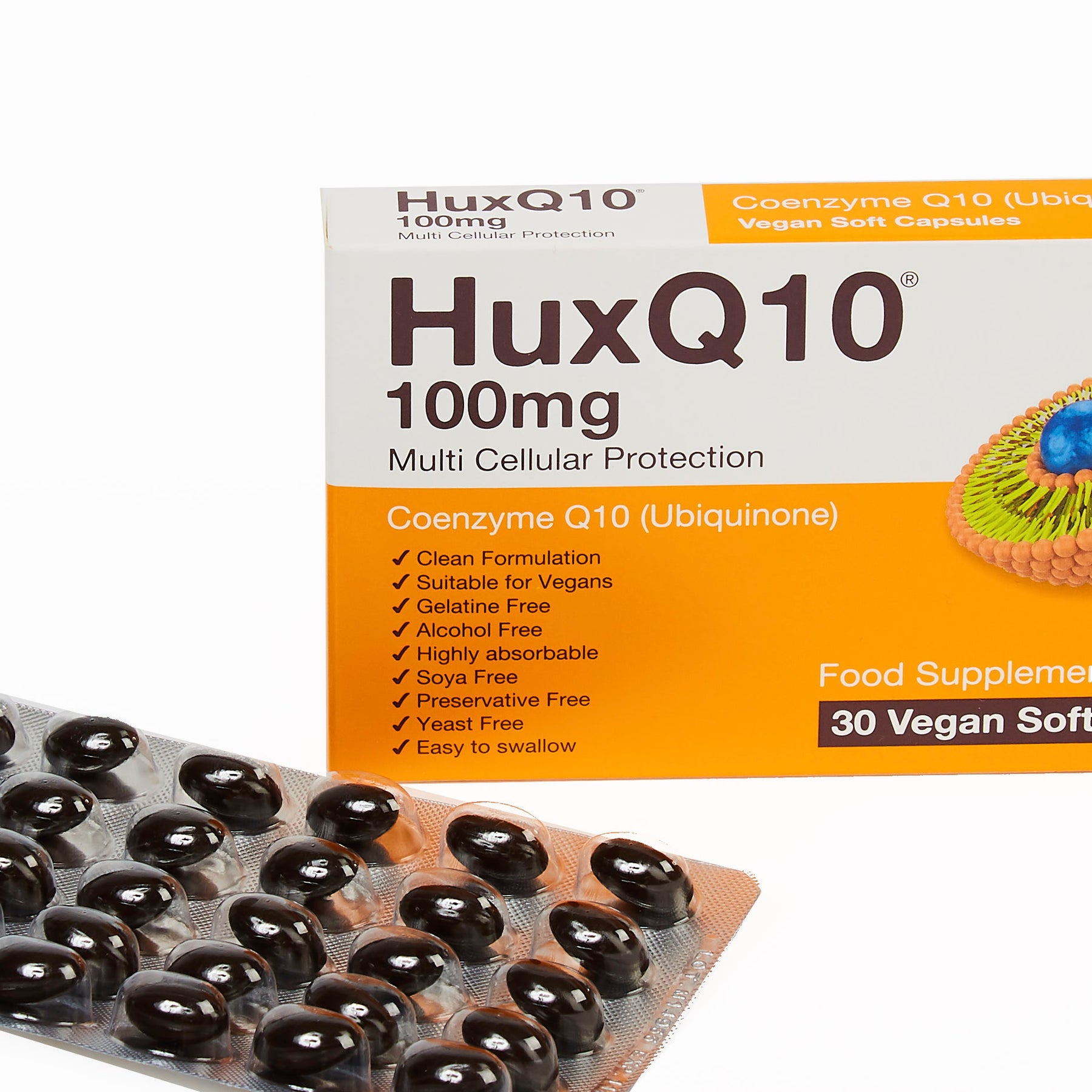
What is Q10?
It is a substance that we all make, it is in every cell in our body, and is involved in practically every single process that takes place in our body. We are made of one hundred trillion cells and each of those cells have little sausage shaped bodies in them called mitochondria. Amazingly we have 500 to 3000 of these mitochondria in every cell! The largest quantities are found in our heart, muscles and our liver as these are some of the most active parts of our body.
It is in these mitochondria that the food that we eat and the oxygen that we breath in are turned into what we call " our energy".
This process is similar to the combustion that takes place in the cylinders of our car engines, where the petrol/diesel fuel with oxygen from the air is ignited by the spark from the spark plug to create the energy to propel the car.
Co-enzyme Q10 is our "spark plug".
The actual" energy" is released from a molecule called Adenosine Triphosphate. Due to the movement of electrons across each mitochondria, called the Oxidative Phosphorylation Pathway, the Co-enzyme Q10 causes the Adenosine Triphosphate (ATP) to break and release a phosphate and become Adenosine Diphosphate (ADP). That explosive break and resultant release of energy is our energy!
Instantly more Co-enzyme Q10 is used to remake the triple phosphate again so that we can keep repeating the process and keep making our energy!
Triple phosphate, double phosphate, triple phosphate, double phosphate over and over again! ATP to ADP, ADP to ATP over and over again, in fact the amount of ATP that we make each day has been calculated to be, by weight, equivalent to half our body weight!
Some of our Co-enzyme Q10 is obtained from our food and is found in peanuts, mackerel, herring, sardines, kidney, liver and heart. Most is made in our body mainly in our liver.
At birth the levels of Co-enzyme Q 10 are quite low but are enough for our needs and by the time we are aged 21 we are making our maximum production of Co-enzyme Q 10 which amounts, at this age, to approximately 2000mg.
As we pass the age 21, production starts to slowly reduce and by the time we are aged 39 to 43 the levels have fallen back to the levels of a two year old! This is are still enough, if we are fit, to live a normal healthy life, both in our work and at leisure.
Ageing further 50, 60, 70, 80 and beyond our production of Co-enzyme Q10 goes lower and lower. We tend to start to realise that, "we haven't got the energy we use to have", and that illnesses associated with old age are maybe starting to appear, such as angina, high blood pressure, circulation problems, heart disease, heart failure, muscle strength loss and muscle loss itself (what the doctors call Sarcopenia which, from the Greek, literally means poverty of flesh).
As people age, many bodily functions can be helped by taking a supplement of Co-enzyme Q10. Over the last 20 years numerous world conferences have taken place at venues including the United Kingdom, USA, Italy, Japan, Belgium, Germany, the Czech Republic and in 2013 the next one will be in Seville in Spain.
Approximately 300 medical specialists from about 90 countries go to each meeting and listen to the latest information about the uses and new uses that have been found in clinical research as to how Co-enzyme Q10 can help peoples' medical problems.
Topics which are often included are:
The heart, liver, kidneys, circulation, parkinsonism, cancer, chronic fatigue syndrome, age related macular degeneration, pre-eclampsia, down syndrome, high blood pressure, rheumatoid arthritis, angina, muscle loss and muscle strength loss, periodontal (gum) disease, heart attacks, alzheimers disease, muscular dystrophy and helping to lower too high a levels of cholesterol .
The late Professor Doctor Karl Folkers, who received the Perkin Medal in 1960, the Priestley Medal in 1986, and from President Bush, the U.S. medal of Science for defining the structure of Co-enzyme Q 10 and heading up the world research effort for 30 years,has stated:-
"Co-enzyme Q10 is necessary for human life. Morbidity is associated with a deficiency of Co-enzyme Q 10 of about 75% and death may occur somewhere between deficiency of 75 and 100%.Low tissue deficiencies of Co-enzyme Q 10 may be subclinical but somewhere between 25 and 75% deficiencies, overt disease states may appear".
Truly then, Co-enzyme Q10 is the "Elixir of Life".
What is available?
There are two forms of Co-enzyme Q10. It exists as an oxidised form ubiquinone, which is orange, and a reduced form which is white. The reduced form is known as ubiquinol or QH. Due to modern encapsulation and packaging methods the Ubiquinol or uniquinol can be maintained in the reduced form. When buying ubiquinol or reduced co enzyme q10 always make sure it is blister packed in light obscuring outer packaging, both light and air will turn it back in to the less active oxidised orange ubiquinone co enzyme Q10.
